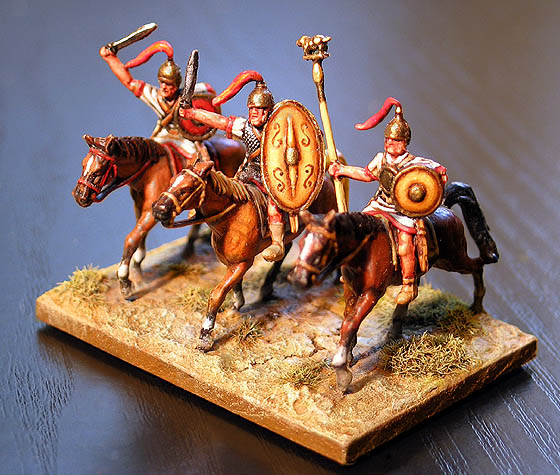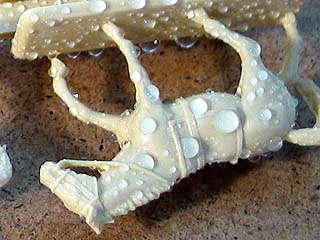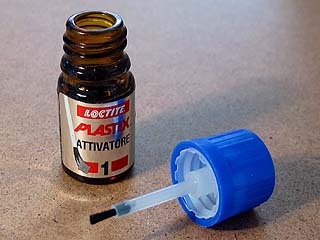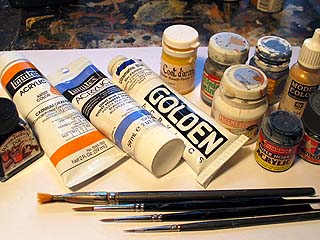|
5 - mounting the figures
Once you have washed up and dried well the sprues (you can use an hair drier to speed the process, taking care not to melt the figures with the excessive heat!) you should mount them on a temporary support to handle them easily while you paint them. There are several schools here and almost everyone has his preferred technique, from attaching them to wooden sticks to even leaving them attached to the sprues. To me the only system that really works is mounting them individually, so I can go around the figure easily, but it's a matter of personal preference of course! I generally use a bit of blue tack to stick the figures to a coin, two pence works best for me. A good alternative I still use is to permanently glue them to smaller coins, (one pence/cent) and actually leave it under the figure when basing it. This has the advantage to add weight to the figure, giving it much more stability.
6 - Undercoating with PVA
An excellent and cheap undercoat can be made using common white glue or PVA. The most important thing here is to get the right consistence, the best method is to put some glue in a small disposable container and then add a single drop of water at a time until you get a running but still thick density. I also add a little of dark brown or black acrylic color to the mixture, it helps to see the PVA which is otherwise quite transparent and also underline the details which is a good help in painting! Using a rather large and cheap brush, with a flat head about 10mm wide, give a good wash to all the figures, completely covering them in the mixture. If it sticks to the figure is too dense, if it dribble off immediately like water on a glass is too liquid. If you do about twenty figures at a time by when you have done the last one the first is ready for the second pass. You'll see that most of the glue will have slowly run off the figure, leaving a nice coat on it. The only problem is this coat is not uniform, because the glue tends to pool in the grooves, risking to hide the finest details. All you have to do is to give them a second pass now, with the same brush but this time completely dry. You'll see that the coat of glue on the raised parts is beginning to dry by now, but where it has pooled is still wet, and will be removed by the dry brush leaving only a thin even coat on all the figure. Just dry the brush in a piece of cloth between a figure and the other or what you remove from one will end up on the next! At this point the undercoat is complete, the whole operation should take only a few minutes and after you have left the figures dry for a few hours you'll be ready to paint them.
|
|











